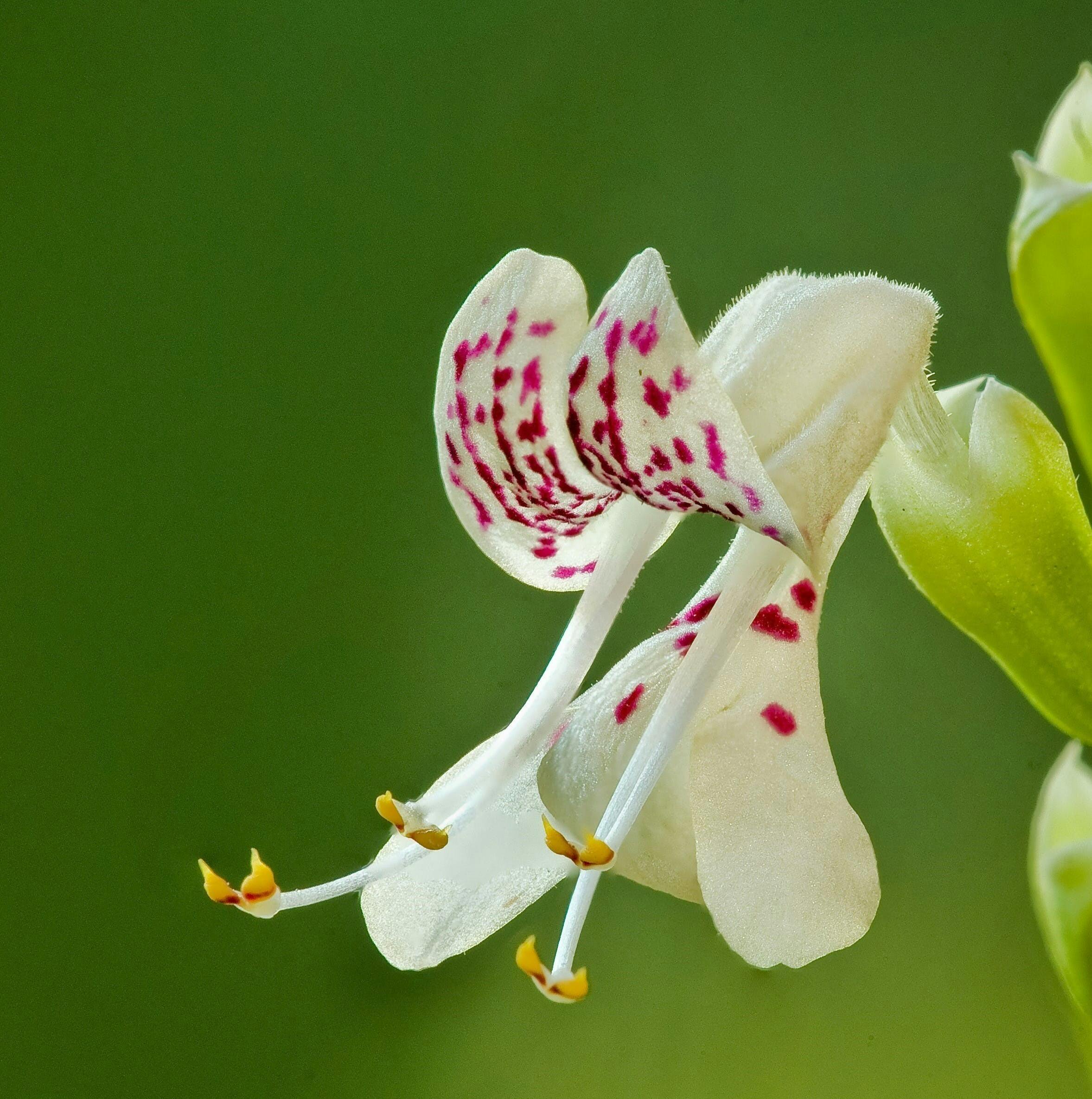 Photo by: Reed Bowman
Photo by: Reed BowmanBehind the Blossoms: The Role of Archbold in Preserving Garrett’s Mint
By Christine Buckley
As Central Florida subtly transitions into fall, Garrett's Mint is also undergoing a transformation: its annual bloom. Endemic to our region, this plant is not just a part of our natural heritage. It's also a critical component of local biodiversity.
Garrett's Mint, scientifically known as Dicerandra christmanii, was first identified in the 1940s by botanist Ray Garrett right here in Sebring. This plant is particularly special because it exists solely within the confines of Highlands County's scrub habitats—environments that are as challenging as they are crucial for certain forms of life.
Flourishing from July through November, with a highlight in October, Garrett's Mint displays delicate white flowers marked with purple, emitting a distinctive eucalyptus-like fragrance. This scent serves a dual purpose: deterring predators while attracting specific pollinators like the bee-fly. These flies are essential for the Mint's pollination, as their interactions with the flowers facilitate the transfer of pollen necessary for seed production.
Archbold Biological Station has played a crucial role in ensuring the survival of Garrett's Mint through targeted conservation efforts in the Florida scrub. This habitat supports one of North America's highest concentrations of rare plant species. Our work extends beyond mere observation; we actively engage in habitat restoration to reverse the decline caused by fire suppression and other ecological threats.
 Photo by Andee Naccarato
Photo by Andee NaccaratoWe undertake specific interventions such as creating new populations and augmenting existing ones. For instance, in 2010 and again in 2012, under the guidance of the US Fish and Wildlife Service and with assistance from horticulturists at Bok Tower Gardens, we introduced new plants and seeds into carefully prepared sites to foster the growth of Garrett's Mint. This hands-on conservation helps stabilize the Mint's population.
Our ongoing management includes annual monitoring to adapt our strategies as needed, ensuring that both new and existing populations of Garrett's Mint thrive. This adaptive management approach helps us respond effectively to the changing conditions of the Mint's habitat. It contributes to the broader goal of preserving Florida's unique biodiversity. Through these efforts, Archbold continues to lead in both the research and practical application of conservation strategies, ensuring that such rare species remain a vibrant part of our ecological community.
Those eager to observe Garrett's Mint can find it in protected scrub areas near Sebring, where targeted conservation actions have bolstered its populations. Observers should approach these habitats with respect, maintaining distance to ensure minimal impact on the plant and its environment. Observing this plant in its natural setting connects us with the state's ecological past and underscores the importance of ongoing conservation efforts. So, this October, consider exploring the regions where Garrett's Mint thrives and experience firsthand the subtle beauty of Florida's scrub landscape.